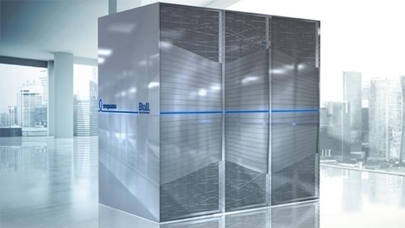Team 26 – Development of stents for a narrowed artery.
4 – The cost model for in-house vs in-cloud high performance computing
According to an IDC study [8], only 7% of the total cost associated with acquiring and operating an HPC system comes from the hardware. A much larger portion comes from the high cost of expertise (staffing), equipment, maintenance, software and training required to run such systems, which explains the high TCO.
4.A – The real cost of an HPC system
To estimate what it really costs to own and operate an HPC System, let’s look at a realistic scenario. Let’s assume that a company needs to run a variety of simulation jobs, most of them mobilizing 32 cores (for example, 10 million finite elements) and some of them with finer-grained geometry mobilizing 256 cores (e.g. 100 million finite elements). The company has to buy a 16-node system, each node having 16 cores, to be able to perform the 32-core as well as the 256-core runs. Let’s say the price of this kind of a system would amount to $70K, or 7% of the TCO. According to IDC, the Total Cost of Ownership of such a system is $1,000K over three years, or $330K per year for 256 cores, or $1,289 per core per year, or $0.15 for one core per hour (core hour). Googling “average server utilization” returns average utilization rates between 5% and 20% (we know some are higher, especially in dedicated scientific supercomputer centers). The following table shows the total cost of one core hour for a 16-node (256-core) in-house HPC cluster depending on utilization rates (or “number of busy nodes”) of this cluster.
| Busy nodes | 1 | 2 | 3 | 4 | 5 | 6 | 8 | 12 | 16 |
| Utilization, % | 6.3 | 12.5 | 18.8 | 25.0 | 31.3 | 37.5 | 50.0 | 75.0 | 100 |
| Cost: 1 core/h, $ | 2.36 | 1.19 | 0.79 | 0.59 | 0.47 | 0.40 | 0.30 | 0.19 | 0.15 |
4.B – The cost of HPC in the cloud
To get to the real cost of HPC in the cloud, let’s consider the cost of one core per hour which amounts roughly to $0.20 (this is a typical price at AWS for example, if you exclude additional services and application software of course). Thus, the workload for a 20% utilized cluster is equivalent to 256 cores * 24 hours * 365 days * 20% = 448,512 core hours * $0.20… or $90K all in all.
4.C – The cost of a hybrid solution
Let’s go back to our scenario of a company that needs to run a mix of 32-core and 256-core simulation jobs at an average 20% system utilization. And let’s also assume the 32-core workload utilizes a small in-house HPC cluster with two 16-core nodes, to accommodate all of the 32-core jobs. This cluster is just 12.5% of the size of the big 256-core cluster with $1,000K three-year TCO, i.e. $42K per year. With an excellent cluster utilization of say 92%, the core hour amounts to $0.16 on this 2-node in-house cluster. If the remaining 256-core 16-node jobs run in the cloud, for about one month per year (we have to choose one month to achieve the above 20% utilization rate of the full in-house cluster), the core hour is again $0.20, or $37K per month.
The combined expenditure of in-house and in-cloud costs ($42K and $37k, respectively) results in $79K per year for the hybrid solution, compared with $90K for a full HPC in the cloud service and $330K for the in-house cluster. In other words, if the decision is a matter of cost and nothing else, the hybrid and the cloud solutions surpass the in-house HPC cluster by at least a factor of 3 for a ‘standard’ 20% usage rate, or less. According to the table above, the cost of the in-cloud solution ($0.20 per core hour) exceeds that of the in-house solution only above an average 75% utilization rate of the latter – a figure typical of academic Supercomputing Centers serving hundreds or thousands of users, but not of average private organizations.
[8] Randy Perry and Al Gillen. Demonstrating business value: Selling to your C-level executives. IDC White Paper, April 2007.
More around this topic...
In the same section
© HPC Today 2024 - All rights reserved.
Thank you for reading HPC Today.






























